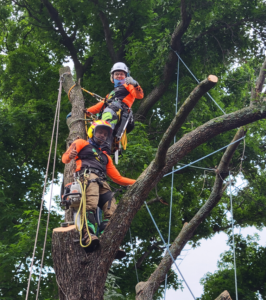Have you ever gazed at your trees and wondered why they’re not as lush or vibrant as you imagined? Just like us, trees need proper nutrition to grow strong and healthy. The key to unlocking their full potential lies in one often-overlooked practice: tree fertilization. This essential process not only nourishes your trees but also enhances their resilience against pests, diseases, and environmental stressors. Let’s dive deep into the world of tree fertilization and discover why it’s crucial for your landscape!
What Is Tree Fertilization? A Brief Overview
Tree fertilization involves applying nutrients to the soil or directly to the tree to promote healthy growth. The primary nutrients that trees require include nitrogen (N), phosphorus (P), and potassium (K), often referred to as N-P-K. In addition to these macronutrients, trees also benefit from micronutrients like iron, magnesium, and manganese.
Why Is Tree Fertilization Important?
Tree fertilization is vital for several reasons:
- Promotes Healthy Growth: Just as we rely on a balanced diet for energy and vitality, trees need nutrients to grow strong. Fertilization helps trees develop robust root systems, lush foliage, and an overall vibrant appearance.
- Enhances Disease Resistance: Well-nourished trees are more resilient to diseases and pests. Fertilization strengthens their immune systems, making them less susceptible to infestations.
- Increases Flower and Fruit Production: For fruit-bearing trees, proper fertilization can lead to a more abundant harvest. It encourages flowering and enhances fruit size and quality.
- Improves Soil Quality: Regular fertilization can improve soil structure and health, promoting a better environment for root development.
- Supports Environmental Sustainability: Healthy trees play a crucial role in carbon sequestration, air quality improvement, and providing habitats for wildlife. Fertilization contributes to the overall health of urban ecosystems.
A Real-Life Story: The Transformation of the Johnsons’ Yard
Consider the Johnson family, who had a beautiful oak tree in their front yard. For years, they admired its grandeur but noticed it becoming increasingly sparse and less vibrant. Concerned, they sought the advice of a certified arborist from Lemon Tree. The arborist identified nutrient deficiencies in the soil and recommended a comprehensive tree fertilization plan.
After a few months of regular fertilization, the Johnsons were amazed by the transformation. Their oak tree flourished, sprouting new leaves and even producing acorns for the first time in years. The Johnsons learned firsthand that proper tree fertilization can revive and invigorate trees, making their yard a beautiful centerpiece once again.
How to Fertilize Your Trees: Tips and Techniques
Fertilizing trees requires careful consideration of several factors. Here are some tips to ensure effective tree fertilization:
- Choose the Right Fertilizer: Select a balanced fertilizer with the appropriate N-P-K ratio based on your tree’s needs. Slow-release fertilizers are often recommended for trees.
- Apply at the Right Time: The best time to fertilize trees is in early spring or late fall when they are actively growing. Avoid fertilizing during extreme weather conditions.
- Use Proper Application Techniques: Apply fertilizer evenly around the root zone, avoiding direct contact with the tree trunk. Water the area afterward to help the nutrients penetrate the soil.
- Monitor Tree Health: Keep an eye on your tree’s progress after fertilization. Look for signs of improvement, such as increased leaf growth and overall vitality.
FAQ: Your Tree Fertilization Questions Answered
Q: How often should I fertilize my trees?
A: Most trees benefit from fertilization every 1-3 years, depending on their species and soil conditions. A soil test can help determine the appropriate frequency.
Q: Can I over-fertilize my trees?
A: Yes, over-fertilization can harm trees, leading to nutrient imbalances and potential root burn. Always follow recommended application rates and guidelines.
Q: Is tree fertilization necessary for all trees?
A: Not all trees require fertilization. Healthy, established trees in nutrient-rich soil may thrive without additional nutrients. However, younger trees and those in poor soil often benefit significantly from fertilization.
Signs Your Trees Need Fertilization
Recognizing the signs that your trees may need fertilization is crucial. Here are some indicators:
- Stunted Growth: If your tree’s growth seems slow or stagnant, it may be lacking essential nutrients.
- Discolored Leaves: Yellowing leaves or those with unusual colors may indicate nutrient deficiencies.
- Poor Flowering or Fruiting: If fruit-bearing trees are not producing flowers or fruit as expected, it may be time to fertilize.
- Weak Branches: Weak or brittle branches can suggest that your tree is not receiving adequate nutrients.
How Do You Care for Your Trees?
What practices do you follow to ensure your trees remain healthy and vibrant? Share your tree care tips and experiences in the comments below—we’d love to hear from you!
Connect with Lemon Tree for Professional Tree Fertilization
Are you ready to give your trees the nutrition they need to thrive? Contact Lemon Tree Tree today to schedule a consultation with our certified arborist. Let us help you create a customized tree fertilization plan that will keep your trees healthy and flourishing for years to come!



